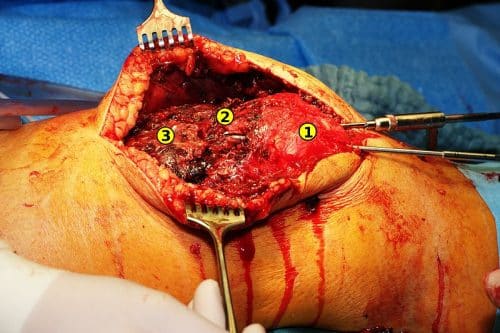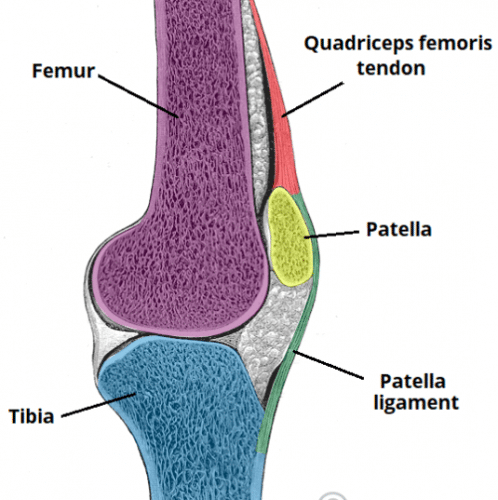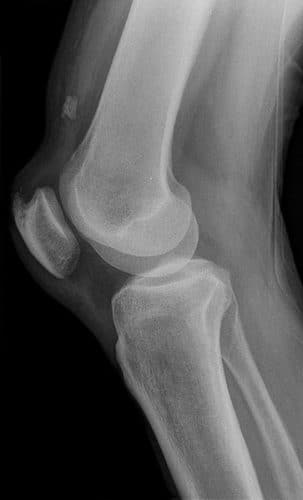Introduction
Quadriceps tendon rupture is the loss of congruency, either partial or complete, of the quadriceps tendon.
It is an infrequent but significant injury with an incidence of around 1.5 cases per 100000 per year. Quadriceps tendon ruptures are more common in males and occur almost always unilaterally.
The quadriceps tendon is a member of the knee extensor mechanism (Fig. 1), forming the connection between the main muscles responsible for leg extension at the knee joint and the base of the patella. Rupture of the tendon typically occurs at the site of insertion with the superior pole of the patella.
Risk Factors
The main risk factor for quadriceps tendon rupture is increasing age, with ruptures rarely occurring in those <40yrs.
Other risk factors include chronic kidney disease, diabetes mellitus, rheumatoid arthritis, and medication (specifically corticosteroids and fluoroquinolones).
Clinical Features
Patients presenting with quadriceps tendon rupture will typically report hearing a pop or feeling a tearing sensation. This is immediately followed by pain in the anterior knee or thigh, and difficulty in weight bearing.
The mechanisms by which the injury most commonly occurs is typically following sudden and excessive loading of the quadriceps muscles, such as landing from a jump.
On physical examination there will likely be localised swelling to the region. There will be a tender palpable defect above the superior pole of the patella.
Complete tears will also be associated with an inability to straight leg raise and loss of the ability to extend the knee. In patients with partial tears, these are inhibited and sometimes absent.
Differential Diagnosis
Differentials for acute knee pain with similar injury mechanisms include patella tendon rupture, patella fracture, or a femoral shaft fracture.
Investigations
Quadriceps tendon rupture can be diagnosed on clinical suspicion alone, especially in complete tears where the clinical signs are more apparent.
Plain film radiographs of the affected knee can show a caudally displaced patella in complete tears (Fig. 2), and will exclude any underlying fractures and cases of patella baja.
For definitive diagnosis, ultrasound imaging can be used, especially important in measuring the degree of rupture. In cases of diagnostic uncertainty, MRI imaging can also be useful.
Management
Treatment of quadriceps tendon ruptures depends on the degree of rupture.
Partial tears can be managed non-operatively providing the extensor mechanism is intact. This involves immobilisation of the knee joint in a brace in tandem with intensive rehabilitation.
Complete tendon tears (or when the extensor mechanism is compromised) usually require surgical intervention, with the technique used depending on the position of the tear*. Tears at the point of insertion with the patella may be repaired using longitudinal drill holes or suture anchors (Fig. 3), whilst intra-tendinous tears can be repaired with end-to-end sutures.
Post-operatively, the knee is immobilised in a brace before progressive strength and flexibility exercises are introduced at approximately 6 weeks post-repair.
*Chronic ruptures (>2 weeks since the injury) may require a tendon lengthening procedure due to tendon retraction

Figure 3 – A quadriceps tendon repair, showing (1) patella (2) distal portion of the tendon (3) proximal portion of the tendon
Key Points
- Quadriceps tendon rupture can be either partial or complete
- The main risk factor for quadriceps tendon rupture is increasing age
- Whilst diagnosis can be made on clinical grounds alone, for definitive diagnosis ultrasound imaging is most often used
- Complete tendon tears or those with a compromised extensor mechanism usually require surgical intervention


